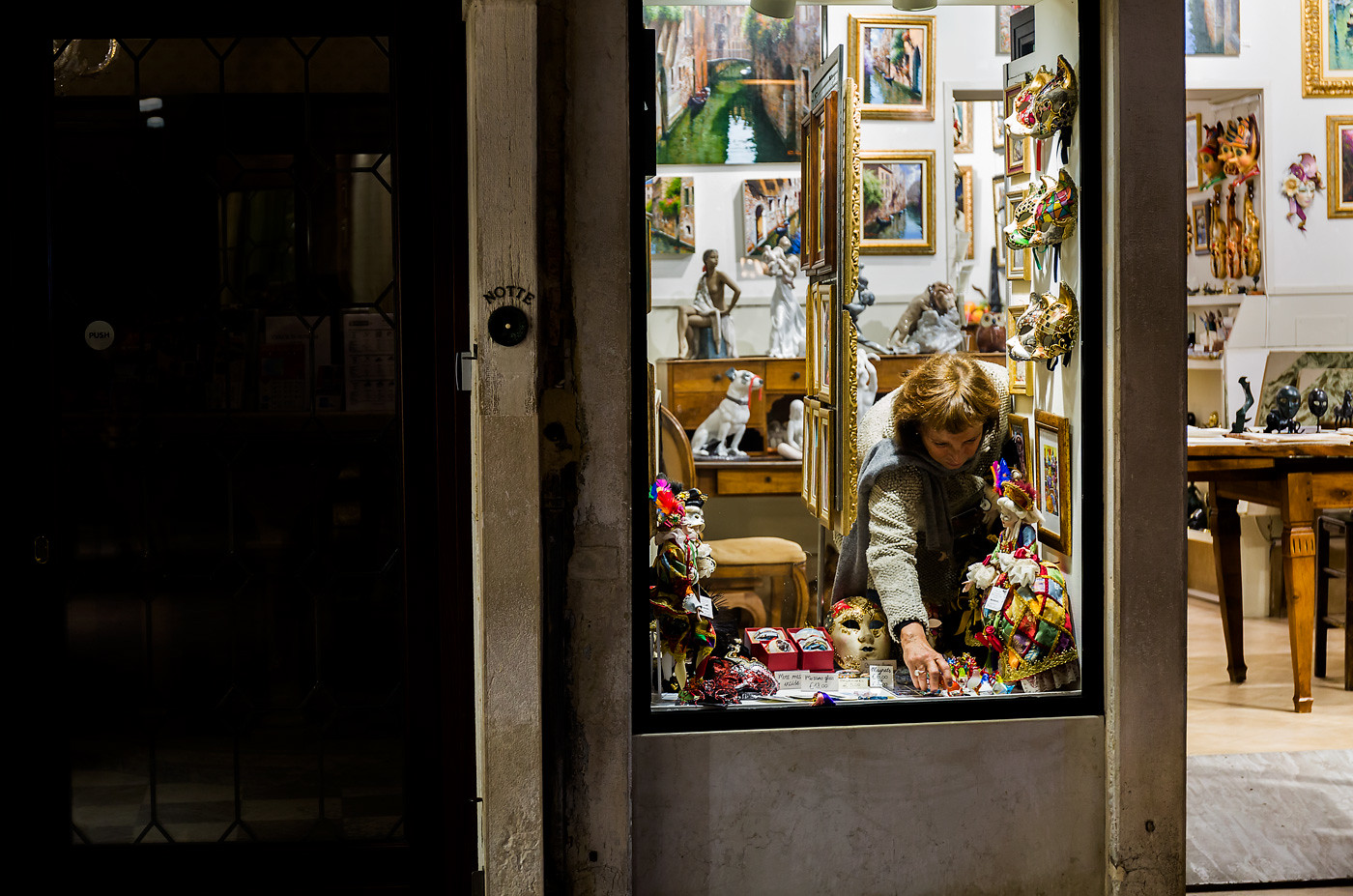Want to shopping in Venice?
Recognizing good artisan stores isn't always easy.
This requires a good eye and an understanding of what you're looking at.
However, there are a few details that should tip you off.
Today I'm giving you some tips on shopping in Venice.
Shopping in Venice: article summary
Shopping in Venice: trust the prices
If prices are a few cents or 1 euro, if there are big discount sale signs of 50 % or more on the window, it's not probably not a store selling local crafts.
Craftsmen and artists spend hours creating even the simplest pieces.
That's why prices for local handicrafts generally start at from 30 eurosfor the simplest works.
So, I'd advise you to look for places offering slightly higher prices, but within reason. You'll be sure to enjoy Venetian craftsmanship.

Inspect display case and interior
In addition to prices, the store window and boutique also provide a wealth of information on production. Craftsmen and artists generally take great care in creating their store window and boutique layout. They are elegant, have personality and are not overcrowded. What's more, boutiques tend to specialize in a single type of craft. So, if you see several types of work, I'd advise you not to stop at the store you've found.
Tourist traps, however, tend to resemble souvenir stores. They are characterized by blinding lights, white walls, plastic shelves and many types of cheap goods. Artists' and craftsmen's stores often function as workshops.
This means that it's not unusual to see them at work, and to see the fruits of their labor in the midst of creation. There's no doubt about it: you're in an authentic place! Please note, however, that not all artisans work in the store you might visit.
Shopping in Venice: go in search of unique products
If the previous 2 tips haven't helped you, then one of the best ways to understand whether you're looking at something authentic or not is to to explore further.
Once inside the store, look around. If you see a lot of identical products, then you're probably not in an artisanal boutique.
Craftsmen may have several copies of a piece, but this stock will generally be small and they will all differ slightly from one another. None will be perfect and identical, is the beauty of handcrafted products.
Identifying passionate merchants
Finally, when you enter a craftsman's or artist's store, you can be sure that the shopkeeper will know just about everything about the products on offer, from their history to how they are made, and will be happy to tell you all about them. Of course, most of them speak Italian, and if you do, it'll be easier. However, there are a few things you need to know, some of them speak a little English, so you'll be able to converse easily.
On the other hand, a salesperson working in a souvenir store is generally unfamiliar with the production and sale of souvenirs. the history of glass or masks and won't be able to answer your question.
Don't trust the label
Don't just believe any "Made in Italy" label. Permissive laws allow an Italian-made label to be affixed to a product even if only the last stage of the production process takes place in Italy. This is the case even with a minor step such as adding a sticker.
On a trip to Venice, you'll probably want to bring back some of the city's unique and typical items. By paying a little attention to the stores you enter, you can quickly form an opinion about the products being sold. For example, you're sure to benefit from the work of a certified craftsman.
What to do in Venice in 1 day, 2 days, 3 days, 5 days, a week?
Whatever the length of your stay, I invite you to download my special Venice guide.
It's free and in PDF format.
All you have to do is tell me below which e-mail address you'd like to receive it at.
EDIT: you can't enter your email?
Take the quiz at the top of this article and you'll be able to register your email address to receive the special Venice guide!
Leave a Reply